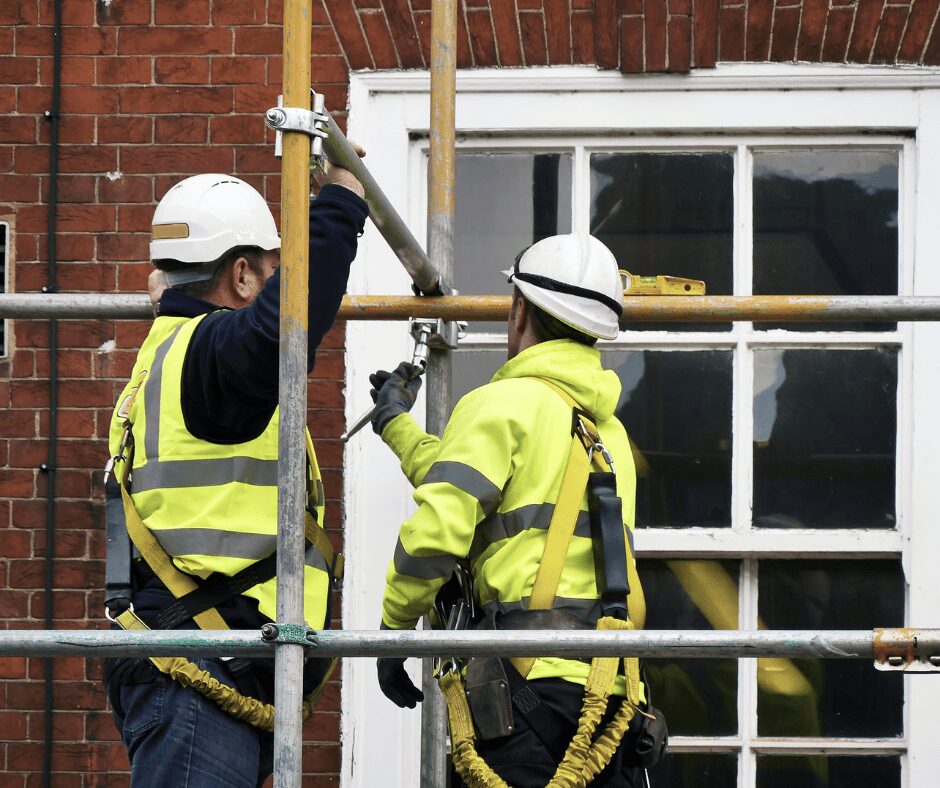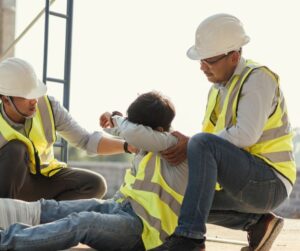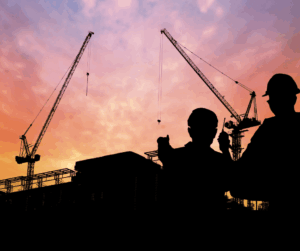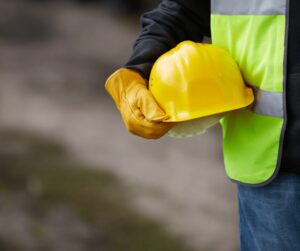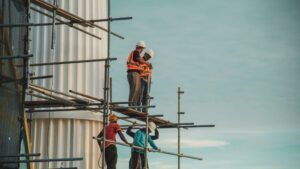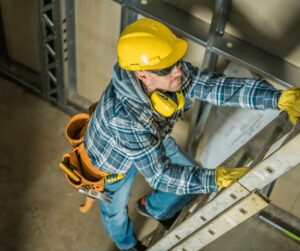
New York is constantly under construction. From the skyscrapers of Midtown Manhattan to the expanding developments in Brooklyn and Queens, scaffolding is everywhere. These temporary structures should keep workers safe, but unsafe scaffold conditions can lead to catastrophic injuries or worse.
When a worker falls from scaffolding, it raises the same question every time: Who is responsible?
Why Are Scaffolding Fall Accidents in New York So Common?
Despite strict regulations, scaffolding injuries occur every year across New York City, Long Island, Westchester, and beyond. According to OSHA’s Fiscal Year 2023 data, scaffolding violations ranked as the fourth most frequently cited standard, with 2,859 violations.
Common scaffolding accident claims involve:
- Weak or unstable structures. Weak scaffolding can collapse under weight or shift unexpectedly, leading to falls or falling debris. Poorly secured scaffolds may also tip over due to uneven load distribution, high winds, or inadequate bracing.
- Lack of guardrails and harnesses. Without these safety measures, workers lack adequate protection from falls. Even a minor slip or loss of balance can result in a dangerous fall from height.
- Overloaded scaffolding. When loads exceed a structure’s weight capacity, it can collapse or become unstable. This can result in falls, falling debris, and serious injuries to workers on and around the scaffold.
- Working in unsafe conditions. New York City’s extreme weather (snow, rain, and wind) makes scaffolds more dangerous when not properly secured.
To prevent these incidents, scaffold fall protection requirements must be followed on every construction job site. New York Labor Law 240, nicknamed the scaffolding law, legally obligates contractors, property owners, and employers to ensure scaffolds are safe.
Who Is Liable for a Scaffolding Fall in New York?
More than one party may bear responsibility for a scaffolding fall. Construction sites usually involve multiple companies, each with separate obligations to keep workers safe. Failing to meet safety standards creates liability under New York law.
Property Owners
Property owners who are having construction done on their properties must confirm that scaffolding is safe before workers use it. They are responsible for verifying that platforms are correctly assembled, inspections are completed, and proper safety gear is provided. New York Labor Law 240 holds most property owners liable when unsafe scaffolding injures a worker, even if the property owner is not on-site.
General Contractors
General contractors oversee projects, making them responsible for ensuring fall protection on scaffolding. Workers are at greater risk if harnesses, guardrails, or stable planks are missing. Allowing work to proceed without meeting safety requirements may result in legal responsibility for injuries.
Subcontractors
Subcontractors manage specific tasks like electrical work, roofing, or window installation. Sending workers onto unsafe scaffolding extends responsibility to the subcontractor in charge of the specific task. Enforcing proper safety measures, such as requiring harnesses and confirming that platforms are stable, falls under their obligations as well as the general contractor’s.
Equipment Providers
Scaffolding companies that rent, sell, or maintain these structures must ensure they continuously meet safety standards. A collapse due to worn-out materials, defective planks, or faulty braces places liability on the provider. Regular inspections and maintenance records are used to determine whether an equipment company contributed to unsafe conditions.
Manufacturers
Defective parts or a flawed design can lead to scaffold failures, making manufacturers accountable. Broken support beams, loose fasteners, or platforms that fail under normal working conditions may indicate issues with production quality. Product recalls and manufacturing defects often come under investigation following falls from scaffolding.
What to Do After a Scaffolding Fall in New York
Construction companies often move quickly to clean up accident sites, so documenting the accident as quickly as possible is essential, as is hiring an experienced local attorney. They can help guide you through the following essential steps.
Seek Medical Attention Immediately
Falls from scaffolding often result in broken bones, head trauma, spinal injuries, and internal damage or bleeding. Medical exams can identify injuries that aren’t immediately visible. Delaying medical care can result in worsening injuries and may allow companies to argue that the fall was not as serious as the construction worker claims.
Report the Fall in Writing
Construction companies and contractors want to limit their liability in scaffolding falls. It is imperative that you file an official accident report with your employer or contractor as soon after the accident as possible. Keeping a copy ensures proper documentation of the accident, which can help determine whether unsafe conditions caused or contributed to the fall.
Take Photos and Videos of the Scene
Before an accident site is cleaned up or the unsafe condition is repaired, you should try to document:
- Missing guardrails or harnesses;
- Broken or unstable planks;
- Cracks, rust, or defects in the scaffolding; and
- Slippery surfaces or loose debris.
Visually capturing evidence of these hazards can help explain why the scaffolding fall happened.
Talk to Co-Workers and Witnesses
Anyone who saw the accident, including fellow workers, may be able to confirm whether equipment appeared unsafe, whether necessary inspections were neglected, or whether safety protocols were ignored. Witness statements can help counter claims from employers or insurance companies attempting to avoid responsibility.
Check Inspection Records
Worksites must keep inspection records showing that scaffolding was checked for stability and safety. Skipping or failing safety checks puts workers at risk and strengthens the case against those in charge.
Keep Track of Medical Records and Missed Work
Injuries, medical visits, and lost wages require thorough documentation to support a compensation claim. The severity of your injuries and potential inability to return to your job can factor into the amount of compensation you may be entitled to.
File a Strong Case Without Delays
New York’s scaffolding law is designed to protect workers, but that doesn’t mean companies want to take responsibility for workers’ injuries. Property owners and contractors may try to deny liability, blaming workers or delaying claims to avoid paying.
Gathering solid evidence, medical documentation, and any records of unsafe conditions can strengthen a scaffolding fall injury lawsuit. New York law limits the time to file a lawsuit, with most construction injury cases subject to a three-year statute of limitations. Waiting too long could result in losing the right to seek compensation.
Call Greenspan & Greenspan Injury Lawyers
A scaffolding fall can leave a worker with permanent injuries, lost wages, and medical bills. That’s why Greenspan & Greenspan Injury Lawyers represents injured workers across New York, from Manhattan to Westchester.
Workers who have suffered injuries from falling off scaffolding have unique legal rights. Call us today and let us help you hold the responsible parties accountable and fight for the compensation you deserve.

